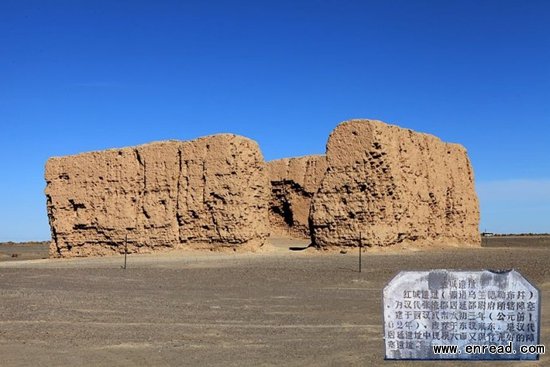| ||||||||||||||||||||||||||||||||||||||||
|
Inner Mongolia Autonomous1 Region in north China has started the process of having the Juyan archeological site recognized with a UNESCO cultural heritage listing, said local authorities on Wednesday.
内蒙古自治区政府周三表示,已准备将居延遗址申请加入联合国教科文组织文化遗产清单。

According to Sun Jianjun, a culture official with the Alxa League (Prefecture), the Juyan ruins, including city sites, walls, pavilions, beacon2 fire relics3, farmland and tombs which fanned out across the Ejin River basin, were first built in 102 B.C. during the reign4 of Emperor Wu of the Han Dynasty.
"It is one of the largest and best-preserved sites on China's ancient Silk Road," he said.
The site covers about 19,600 square kilometers. "For more than 2,000 years, it witnessed exchanges of China with the west, as well as communication between ethnic5 groups of north China," Sun said.
Sun's office will submit an application to the State Administration of Cultural Heritage before August 8, the 70th anniversary of the Inner Mongolia Autonomous Region.
UNESCO has acknowledged 1,052 world heritage sites across the globe. China has 50 such sites, including 35 cultural sites, 11 natural sites and four mixed sites, according to the UNESCO website.
点击  收听单词发音 收听单词发音
|
||||||||||||||||||||||||||||||||||||||||
- 发表评论
-
- 最新评论 进入详细评论页>>



